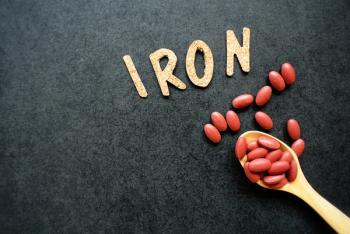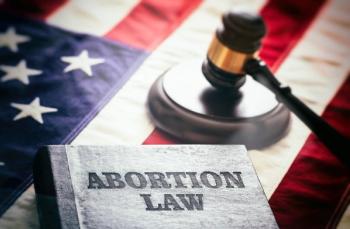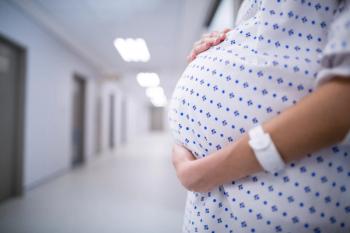
Serum Levels of Vitamin A E B-Carotene and Folate in cases with Cervical Intraepithelial Neoplasia
A number of case-control and cohort studies have demonstrated a relationship between high intake of foods rich in carotenoids, Tocopherols, and vitamin C with a reduced risk of certain human malignancies.
Abstract
Background
A number of case-control and cohort studies have demonstrated a relationship between high intake of foods rich in carotenoids, Tocopherols, and vitamin C with a reduced risk of certain human malignancies.
Objective
The purpose of this study was to investigate the comparative plasma levels of a profile of known dietary antioxidants, namely, vitamin A, vitamin E, B-Carotene together with Folate levels in cases with Cervical Intraepithelial Neoplasia, (CIN).
Design
Cross-Sectional Study
Setting
Al-Hussein University Hospital, El-Darassa, Cairo-Egypt.
Subjects and Methods
The target population was women with a histopathological diagnosis of cervical intraepithelial neoplasia (CIN) and a control group. All women resided in the same catchment area (E-Darassa, Cairo-Egypt) and were of similar socio-economic background, representing a fairly homogenous population group. No limitation or changes were introduced in each participant’s dietary habits.
Sample of 200 women (100 women with CIN & 100 women as control) was recruited with informed consent. Plasma levels of vitamin A, vitamin E, B-Carotene and folate were measured. Results compared between cases and controls and among cases with CIN.
Results
Mean plasma level of vitamin A was significantly higher in control group than cases with CIN (P<0.001); vitamin E cases showed significantly low mean level in cases with CIN (P<0.001); mean level of B-carotene was significantly low in cases with CIN (P<0.001) and mean folate levels were significantly higher in control group than in cases with CIN (P<0.001). There were significantly lower levels of vitamin A, vitamin E, B-carotene and Folate in cases with CIN compared to control group. Levels of vitamin A and B-carotene decreases significantly with increasing CIN stage. Levels of vitamin E and folate, were insignificantly low with advanced stage of CIN.
Conclusion
The finding of a decrease in all plasma antioxidant nutrients levels, namely, vitamin A; B-Carotene and vitamin E in women with CIN suggest a potential role for antioxidant deficiency in the pathogenesis of CIN. Also Coexisting deficiency of antioxidant and folate may potentially increase the risk for CIN and consequently cancer cervix.
Introduction
Malignancy of the lower genital tract should be considered generally preventable because of indolent growth of most tumors, the fact that most have defined biology and precursor lesions and for many of availability of active screening method such as Pap smear.
Worldwide cervical cancer is second only to breast cancer as the most common malignancy in both incidence and mortality (1).
The cervix is an ideal model for the study of chemoprevention in humans. The evidence is strong that normal cervical epithelium proceeds through a precancerous stage (cervical intraepithelial neoplasia, CIN) prior to the development of invasive cancer. In addition, the anatomical location of the cervix allows magnified visualization via colposcopy and cytological and histological samples are easily obtained in the office setting.
The evidence of a relationship between cancer and diet has received much attention in the last decade, epidemiological studies examined the relationship of cervical neoplasia with the serum level of B-carotene, alpha-tocopherol and folate. The overall evidence is only suggestive of a protective effect of these micronutrients against cervical cancer (2,3).
Recently the attention has been concentrating on the antioxidant effect of vitamins A, E and folates to protect against cancer.
Epidemiological data suggest an association between increased dietary intake of micronutrients that are high in antioxidant vitamins as vitamin A, E and C and protection against the incidence of some human cancers(4). These antioxidants appear to be essential nutritional requirements of the human female reproductive tract and are implicated in the pathophysiology and carcinogenesis of the human organs.
The purpose of this study was to investigate the comparative plasma levels of a profile of known dietary antioxidants, namely, vitamin A, vitamin E, B-carotene together with folate levels in cases with cervical intraepithelial neoplasia.
Subjects and Methods
Hundred patients with different grades of CIN were selected for this study. Another 100 women were selected from the same catchment area EL-Darassa, Cairo) with similar socioeconomic background and dietary habits with no evidence of CIN (control group).
All women were monogamy and both groups were matched for age, age at marriage, duration of marriage and parity.
All patients signed informed consent and had physical examination and pelvic examination including Pap smear and colposcopic examination with biopsies when needed.
Blood samples were collected in serum separator tubes. Collection of samples performed regardless the time of the day or the fasting state of the participant. Serum used to measure vitamin A, vitamin E, B-carotene and Folate levels.
Vitamin A and B-carotene measured by using the calorimetric assay.(5) Serum Folate levels were measured by radioassay procedure by the solid phase no boil dual count kit. Serum alpha-tocopherol levels were measured by their reduction of ferric to ferrous ions, which then form a red complex with α,? dipyridyl. Tocopherols are first extracted into xylene and the absorbance is read at 460 nm to measure the tocopherols. A correction for the tocopherols is made after adding ferric chloride and reading at 520 nm(6).
Clinical and laboratory data were recorded on an investigative report form. These data were transferred to IBM card using IBM personal computer with statistical program SPSS. Mean, standard deviation, and ranges computed with the use of unpaired t-test and chi square with significant level set at P<0.05 (CI 95%).
Results
Mean age (± SD) in cases was 40.58± 8.76 years and in controls it was 39.15±7.39 years. Mean age (±sd) at marriage was 15.84±.28 in cases and in the control group it was 17.10±2.28 years. The mean duration of marriage in cases (±sd) was 24.29 ±8.52 years and in control group it was 22.11±6.7 years. Mean number of pregnancies in cases was 5.95±1.59 pregnancies and in the control group it was 5.95±1.11 pregnancies.
There were no statistical differences between cases and controls. (
The commonest presenting symptom in cases was contact bleeding (64%) while in control group vaginal discharge was the main presenting symptom (30%). (
Oral contraceptive pills used by 70% of patients in cases with CIN while in controls pills used by 9% of women and condom used by only 1% of couples in cases with CIN while it is used by 63% of couples in the control group. (
Serum levels of vitamin A were significantly lower in cases with CIN (8.21±3.48ug/ml) than in control group (14.92±2.25 ug/ml) P<0.001.
Serum levels of B-carotene were significantly lower in cases with CIN than in control group. (122.68±51.5mg/dl and 197.74±42.1 mg/dl respectively) P<0.001.
Levels of alpha-tocopherol (vitamin E) were significantly lower in cases with CIN than in control group (6.05±1.8mg/dl and 12.27±2.86 mg/dl respectively) P<0.001.
Levels of Folate were significantly lower in cases with CIN than in control group (11.21±4.78ng/ml and 18.16±4.04 respectively) P<0.001. (
Vitamin A and B-carotene levels decreased significantly with increasing stage of CIN.
Vitamin E and Folate, although, reduced with increasing stage of CIN but this was not significant. (
Discussion
Recent attention has focused on the ability of vitamins A, E, Folate, Selenium and Zinc to prevent the expression of malignant cellular behavior as well as to cause regression of established squamous cancer (7). Patients with squamous cancer of the cervix have abnormal levels of serum micronutrient vitamins, however, some contradictory reports fail to confirm the presence of low serum micronutrients as a cancer risk (3).
The present study was made to delineate the levels of serum antioxidant vitamins among the women suffering from established cases of cervical dysplasia.
Low levels of antioxidant vitamins were observed among all the clinically and histopathologically classified cases of cervical dysplasia.
Serum micronutrient vitamins in this study, showed significant decrease with state of disease, suggesting that all cases may suffer from altered concentrations.
Deficiency of vitamin A and B-carotene are associated with an increase in cervical metaplasia and adverse effects of these micronutrients deficiency on cell differentiation and growth may potentate the effects of a local carcinogen or allow more rapid proliferation of malignant cells.
A highly significant lower serum vitamin A and B-carotene levels were observed in cases with CIN. The same was observed by other studies (4, 7, 8, 9).
Vitamin E may serve as an electron donor or acceptor, who may potentate its role in maintaining normal epithelium, or potentially enhance or inhibit the activity of cancer causing agents or carcinogens. Possible mechanisms of carcinogenic inhibition include alteration of the carcinogen structure and competitive inhibition or prevention of carcinogen accesses to key target tissue by an increase in membrane stability. Vitamin E levels were significantly lower in cases with cervical dysplasia compared to controls. These observed in other studies (10, 11, 12).
In this study folate levels were significantly lower in cases with cervical dysplasia. This finding observed in a number of studies which suggest a role of foliate in reversal of pre-neoplastic conditions of cervical and lung cancer (13,14,15).
Lower serum level of foliate together with lower levels of vitamin A, B-carotene and vitamin E were considered as potential risk factors for cervical dysplasia and cancer.
In this study it was observed that patients using oral contraceptive had significantly lower levels of micronutrient vitamins.
Users of oral contraceptive steroids have been observed to have increased urinary loss of folate and require an intake adjustment to offset this loss (16). Butterworth et al (15) showed a statistically significant improvement of CIN I and CIN II, in patients taking contraceptive steroids, treated with 10 mg of folic acid for 3 months. They suggested that inadequate reserves of folate enhanced the effects of other risk factors such as cigarette smoking, parity and HPV .
The current study showed that coexisting deficiency of folate together with the antioxidants, vitamin A, vitamin E and B-carotene increases the risk for the development of CIN. This was demonstrated by Kwasnicwske et al.(17)
*Pregnant
*Vaginal discharge
IUCD
P<0.001=highly significant
Serum levels of vitamin A, vitamin E, B-carotene and folate in cases with CIN I and CIN II/III
P<o.oo1=significant
NS=non-significant
References:
References
1-National institute of Health Consensus Development Conference Statement; Cervical Cancer. NIH Consensus Statement 1996,April1-3;14(1):1-38
2-Meyskens FL Jr; Surwit E; Moon TE; Childers JM; Davis JR; Dorr RT; Johnson CS; Alberts DS. Enhancement of regression of cervical intraepithelial neoplasia II (moderate dysplasia( with topically applied all-trans-retinoic acid. J.Natl.Cancer Instit.1986,(1):573-575.
3-Willelt WC; Plk BF; Underwood BA; Stumpter MJ; Pressel S; Rosner B. Relation of serum vitamin A and E to the cancer. New.Eng. J.Med.,1994;10:430-434.
4-Palan PR; Romney SL; Mikhail M;et al. Decreased plasma beta-carotene levels in women with uterine cervical dysplasia and cancer. J.Natl.cancer.Inst.1994;80:454-5.
5-Neeld P. Colorimetric determination of serum vitamin A, B-carotene.Analyte Biochem.1985;40:445-58.
6-Baker H and Frank O. Clinical vitaminology. Wiley; New York 1988:172.
7-Kummet T; and Meyskens FL. Vitamin A, B-carotene: potential inhibitor of human cancer. Semin.Oncol.1993;10:281-90.
8-Palan PR; Romney SL; Mikhail MG; Basu J and Vermund SH. Decreased plasma beta-carotene levels in women with uterine cervical dysplasia and cancer. J. Natl.cancer Inst.1988;80:454-455.
9-Heinenen PK; Kuoppala T; Kaskinent and Punnenen. Serum vitamin A and E in patients with Gynecologic cancer. Arch.Gynecol.Obstet.;1991,141:151-156.
10-Kenkt P. Serum vitamin E level and risk of female cancers. In.J.Epieniol.1988;17:281.
11-Orrjw Jr.; Wilson K; Bodiford C. Nutritional status of patients with untreated cervical cancer. Am.J. Obstet.Gynecol.;1992;151:625-31.
12-Palan PR; Mikhail MS; Goldberg GL; Basu T; Rounowicz CD; Romney SL. Plasma levels of beta-carotene, lycopene, Canthaxanthin, ritnol, and alpha-tau-tocopherol in cervical intraepithelial neoplasia and cancer. Clin.cancer.Res.1996.Jan;2(1):181-5.
13-Subar AF; Block G; James LD. Foliate intake and food sources in the US population. Am.J.Clin.Nutr. 1989,50:503.
14-Ran JY; Li XF; Rav HL; Wang LY and Herbert V. Selective foliate deficiency in one but not another cell line. Blood 1990,76:114a.
15-Butterworth CE Jr; Hatch KD; Gore H. Improvement in cervical dysplasia associated with folic acid therapy in users of oral contraceptives. Am.J.Clin.Nutr. 1992,35:73-82.
16-Suberlich HE; Kretsch ML; Skala JH. Foliate requirement and metabolism in non pregnant. Am.J.Clin.Nutr.,1987,46:1016.
17-Kwasnicwska A; Tukendrof A; Semczuk M. Foliate deficiency and cervical interaepithelial neoplasia. Eur.J.Gynecol. Oncol.1997;18(6):526-30.
Newsletter
Get the latest clinical updates, case studies, and expert commentary in obstetric and gynecologic care. Sign up now to stay informed.









